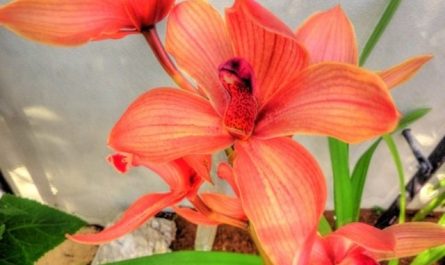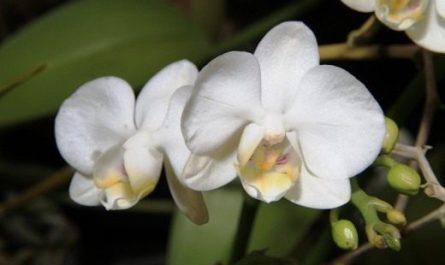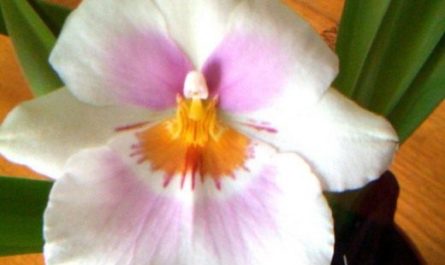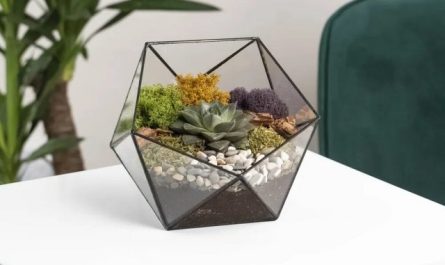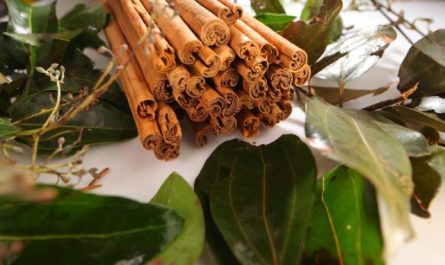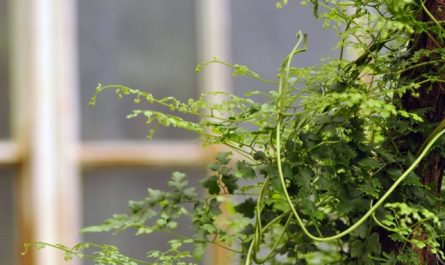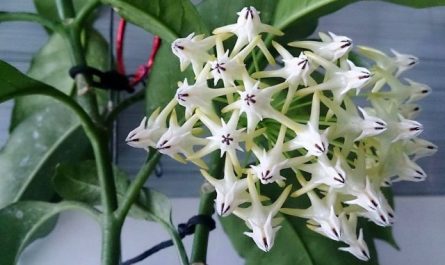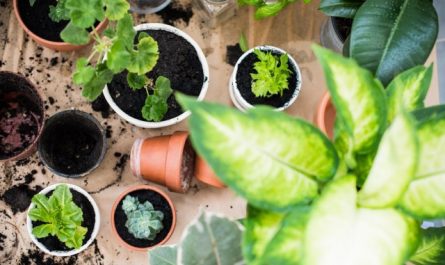Among the carnivorous plants, the sundew rightly claims the title of the brightest and most expressive beauty. This plant attracts, first of all, with its unusual textures and play of colors. But the feeding mechanism of this swamp and quite hardy miracle is so exotic that it is very easy to forget about sundews as plants, primarily decorative. Sundews require the creation of special conditions for maintenance, they are quite demanding in terms of humidity, but they are easier to grow in ordinary living spaces than many rarer indoor predators. And caring for them cannot be called very difficult.

Sundew – a miniature predator from peat bogs
The fashion for exotics has made carnivorous plants quite popular. The sundew gives the impression of a plant that is not just extravagant, but very beautiful. Its “predatory nature” is not so striking.
Sundew is often called a sticky plant or a trap plant and is advertised as a crop that can get rid of insects in the house. But the sundew’s ability to fight annoying mosquitoes and flies is exaggerated. And getting it instead of repellents, nets and sticky tapes would be a big mistake. Sundew should become the star of the collection, and not an analogue of fumigators.
Sundews represent the family of the same name – Droseraceae. They grow in peat bogs of all continents and often coexist with shrubs of the heather family.
The fact that sundews are predators does not mean that the plant is completely dependent on receiving animal food. The combination of the usual (and main) way of receiving nutrients, through photosynthesis, and the digestion of animal food in sundews is unique.
This carnivorous plant is considered more aesthetically pleasing than its competitors. After all, the sundew not only “feeds” quite slowly, but also does not emit unpleasant odors.
The sundew attracts insects with the glitter of its drops, which shimmer in the sun. It feeds on small insects – mosquitoes, ants and small flies, which stick to the hairs. The mechanism of leaf folding is triggered by the movements of the insect, which, when trying to escape, sticks more and more to the hairs.
The hairs react instantly, bending over the insect and triggering the leaf-folding mechanism. Sundew can hold a fly for half an hour without the leaves folding, but most species curl the edges of the leaves within minutes.
Inside the rolled leaf, the “prey” is digested for two weeks, thanks to enzymes in the mucus, after which the leaf straightens out again. The nutrients formed during the digestion process are absorbed by the leaf cells, and the chitinous skeleton remains on the surface. Transparent drops and beautiful leaves return to their original appearance quite quickly, a few days after the leaf opens.

Growth, leaves and flowering of sundews
Sundews are miniature and very neat plants, developing mainly in width. They produce compact, flat rosettes of basal leaves. The root system of sundews is very weak, it does not provide the plant with nutrition from the soil and only plays the role of holding the bushes in the soil. With a bush height of only up to 10 cm, sundews can produce quite long, up to 30 cm, flower stalks.
The leaves of the plant are unusual, round or oval in shape, sit on fairly long and thick petioles, in some species they are sessile and thin, resembling blades of grass. The size of the leaves varies from 0,5 cm to almost 50 cm, but in indoor sundews leaves do not grow larger than 10 cm.
Long, thick, translucent reddish hairs sit quite densely. Sundews release sensitive hairs with a gland on the edge, which secrete luminous, transparent, sticky droplets of mucus that shine in the sun.
Of course, it is primarily intended to catch insects, but the shining drops on the large, thick hairs give the plant a certain charm. The fringe on the leaves of the sundew is difficult to compare with other indoor plants, because everything in this culture is special. As if covered with small drops of dew, the plant looks very decorative and attractive.
The blooming of sundews does not spoil the appearance of the plant at all. White, pink or red, flowers in spikelets and panicles of these predatory stars swing on long peduncles high above sticky rosettes and pleasantly surprise with their grace.
Sundews usually bloom in spring. The double perianth emphasizes the beauty of the corolla, consisting of an even number of petals (from 4 to 8). After flowering, sundews form fruit capsules that hide fairly small seeds. Pollination occurs differently in different sundews; pollen from indoor plants must be transferred artificially.
Before deciding to purchase sundews, it is worth carefully studying the characteristics of this plant. As with any other indoor predator, sundews should come with “instructions” with a detailed description of the conditions required by the plant, nutritional features and cultivation nuances. You should not purchase a plant without complete information about the type of plant and the specifics of care. The key information is whether the plant can grow without a florarium or display case.

Types of indoor sundews
Unpretentious indoor sundews
The number of species of sundews, which are not always easy to distinguish from each other, exceeds a hundred.
It is found in nature in the middle zone round-leaved sundew (Sundew rotundifolia) is a rather beautiful marsh plant that lives in peat bogs and is very similar to its indoor relatives. Sometimes wild sundews are transferred to a potted form, but in order for such plants to take root, they must be dug up with the soil in which they grew, and kept only in florariums or flower displays.
Indoor culture is mainly represented by two unpretentious species of sundews, distinguished by their compactness and greater decorativeness. But other, more capricious species can also be grown as potted plants. In total, more than ten species of sundews are considered adapted to greenhouse and indoor culture.
Cape sundew (Sundew capensis) is the most popular and unpretentious type of indoor predators with amazingly beautiful, elongated-lanceolate, reddish or light green leaves in a fairly dense rosette with unique red sticky pubescence. Peduncles up to 20 cm high are crowned with an inflorescence of a dozen bright pink flowers.
Sundew Alice or Alicii (Sundew aliciae) is one of the most common types of sundew, famous for its unpretentiousness and the formation of symmetrical, flower-like rosettes of elongated-oval leaves arranged in tiers. The reddish edging of belt-like hairs gives the plant a smart look. The transition from rusty at the edge of the leaves to a yellowish-green hue at the base attracts even more attention to this sundew.



Capricious sundew species
Rosyanka Adel (sundew adelae) – a miniature species that seems almost red due to its dense pubescence, with very thin leaves of an ideal lanceolate shape, with a prominent central vein. The light and cold shade of green contrasts with purple hairs and thick drops of mucus. This sundew actively releases babies and captivates with its elegance.
Sundew wedge-leaved (Drosera cuneifolia) – a very sticky and densely pubescent species with larger leaves of a wide, wedge-shaped form in flat miniature rosettes. Very dense pubescence gives the edges of the leaves a reddish tint, the plant seems miniature and heavy at the same time.
Double sundew (Sundew binata) is one of the most original types of sundews. The plant got its name not for the structure of its rosettes, but for its leaves: narrow, thin, they originally fork at the ends, twisting into a spiral and creating bizarre silhouettes.
Sundew of paradox (Drosera paradoxa) – one of the most original species, famous for its extravagance of form. It is characterized by very dense, almost spherical rosettes of long-petiolate, sessile on the thinnest stalks oval leaves. The stem can gradually lengthen and become woody. The swaying leaves are so bizarre that they seem to be pubescent round flowers. The contrast between the red leaves and the green petioles at the bottom is amazing.
Sundew nidiformis (Drosera nidiformis) – a very beautiful species with a bright green color and light hairs. Thin long petioles turn into round-oval leaves, the plant looks striking and very elegant.
Drosera hamiltonii (Drosera hamiltonii), also known as the pink sundew, is a very beautiful variety with flat rosettes of tongue-shaped pinkish leaves, on which dark cherry hairs “stick out”. The mucus drops are larger than those of other sundews, which only emphasizes the tiny, up to 6 cm, size of the rosettes themselves. The species is valued primarily for its flowering – crimson, four-centimeter flowers on a very long peduncle seem luxurious.
Sundew reginae (Drosera regal) is the largest species of sundew. The rosettes of leaves of this plant can reach 50 cm in diameter. The leaves are long and thin, intricately curved at the edge, creating a strikingly graceful silhouette of the rosette. The raspberry or cherry hue at the base of the leaves is combined with a whitish, pink edging on the edges of the leaves, which emphasizes the beauty of the plant.



Growing conditions for indoor sundews
The sundew is most often chosen for acquaintance with indoor predators because it is easier than its competitors to grow in living rooms. It is demanding both to temperature and to lighting, but only relatively.
Sundews are best grown in flower display cases or humid florariums. In a glass vessel or a special semi-automatic “aquarium” they will be able to enjoy consistently high humidity and not suffer from changing conditions.
In fact, when looking for an option for growing sundews, it is better to focus on bromeliads and the main moisture-loving indoor stars: sundews are comfortable in the same places as selaginella, ferns, cryptanthus, pilea and fittonia.
Lighting and placement
Bright lighting is the key factor in growing sundews. This plant will not survive even in a little shade. Sundews need to be placed in sunny, bright places on windowsills. Sundews do not tolerate direct sunlight. The lighting for them should be diffused, but bright enough.
They cannot be grown only with artificial lighting, but often require it. It is necessary to compensate for the seasonal reduction in lighting in winter for sundews, so during the dormant period, it is better to keep the plant on southern windows, and during the period of active growth – on eastern or western windows.
The duration of daylight for sundews is usually strictly controlled, especially if grown in display cases and terrariums. In spring and summer, the optimal duration of daylight is about 14 hours. In winter, the acceptable minimum is 8 hours.
Sundews signal insufficient or unstable lighting very quickly. And the first signs of loss of color, greening of the plant, change in texture to sluggish and soft, drying out should not be missed: the faster the lighting is increased, the better.

Temperature conditions and ventilation
For sundews, the temperature of the contents is selected according to the habits of the plant. Sundews come from South Africa, they prefer hot conditions, a temperature of about 30 degrees throughout the summer, European cold-resistant sundews do not like heat and look and develop best at a temperature of about 18 degrees.
Almost all indoor sundews today are adapted to average temperatures – from 18 to 23 degrees. When buying a plant, you must definitely clarify what temperature conditions the plant is accustomed to and strictly adhere to the recommendations.
Sundews will need a cool winter. This plant cannot be kept at the same temperatures both during the period of active growth and during the dormant period. The ideal indicators for the winter period are considered to be 8-13 degrees Celsius. An increase above 14 degrees is unacceptable.
The exception to this rule is the Cape sundew and Alice, which can overwinter in warmth, but only on condition that the lighting in winter does not differ from summer. The minimum temperatures for sundew are 7 degrees for heat-loving species, and 2 degrees for local cold-tolerant sundews. But it is still better to adhere to the general rules and not allow the cold to fall below 8 degrees.
In summer, sundews can be taken out into the open air, protected from direct sunlight. Predators do not tolerate drafts and sudden changes in conditions.
Caring for sundews at home
Taking care of sundews is not easy. For them, the usual conditions of swamps are recreated in room conditions. The key indicator for sundews remains the air humidity indicator, even to watering the plant is not as demanding as to measures for humidification. It is very difficult to maintain comfortable indicators for sundews without a flower showcase or florarium.
Watering and air humidity
Sundews are extremely moisture-loving; they cannot stand even a short drought, and it is advisable to build a care program in such a way that the substrate always remains moist and does not dry out even in the middle part.
It is better to water the plant not in the classic way, but by the method of bottom watering or by saturating the soil with water. In summer, it is not necessary to drain the water from the trays, but allowing excessive moisture is not the best idea. Watering is combined with daily light spraying of the soil surface to maintain stable light moisture and prevent the substrate from drying out at the top, in the root zone.
For sundews in the spring-summer period, the standard is considered to be 1 watering every 3 days. But in winter, 1 watering per week is usually enough. During the dormant period, watering is reduced in accordance with changes in conditions, but still continues to maintain stable soil moisture and does not allow the substrate to dry out.
For sundews, it is extremely important to control the quality of water for irrigation. This plant is best watered with rainwater or similar water with soft characteristics (distilled or filtered).
The moisture-loving nature of sundews is also manifested in the requirement to maintain constant high air humidity. When these indicators fall even to average (below 50%), sundew leaves begin to dry out.
Sundews are recommended to be grown at air humidity of at least 70%. In this case, a comfortable environment can only be maintained by installing humidifiers or using florariums and flower displays, because sundews do not tolerate spraying and getting wet.
If the plant is not grown “under a hood” permanently, a temporary glass hood or greenhouse can be installed for the winter period. Air humidity can be increased not only by using trays with wet expanded clay and containers with water around the plant, but also by wrapping the pots with sphagnum or using double containers with moss-filled spaces.

Top dressing and fertilizer composition
As with all carnivorous plants, sundews do not require fertilizing in the classical sense. Even if there are certain difficulties with nutrition, there is no point in fertilizing to maintain a stable environment.
Additional food for sundews should be insects. Usually, plants are fed with flies or other small insects, which can be purchased in aquarium departments and pet stores.
In summer, sundews can be placed on balconies or in the fresh air, where they can attract insects in any quantity. Sundews do not require frequent “feeding”: they are passive predators and, unlike other relatives, can go for long periods without “victims”. The standard frequency of “feeding” is once a week, 1-2 flies per plant.
In winter, instead of the usual “food”, protein food is sometimes used – tiny pieces of meat (fresh) or crumbs of boiled protein, similar in size to a small fly.
But experimenting with such feeding is quite dangerous. Firstly, the hairs of most sundews react only to specific food and may not react to protein – just like to garbage or foreign objects. And, secondly, for sundews, unusual food often becomes destructive.
In winter, feeding is done rarely, about once a month. Sundews simply stop growing, but do not die.
Transplantation, containers and substrate
Sundews are usually replanted as needed. This is one of the plants that is best not replanted immediately after purchase and only moved when the container becomes too small.
For sundew, it is better to choose the classic transplant dates – February or March, before the plant “wakes up”.
Sundews require a very specific substrate. Not only should it be strictly controlled in composition, but it should also have a very rare acidity – pH from 3,5 to 4,5. Only ready-made purchased substrates intended specifically for carnivorous plants can be used for sundews. Poor peat soil mixed with perlite and quartz sand is an ideal option.
Only if the plant is brought to florariums from nature, the soil in which it grew should be used for planting, taking the sundew together with peat and moss. Perlite or loosening additives are added to the substrate charmingly.
Sundews are grown in flat, low, wide containers with drainage holes and a height of no more than 8 cm.

Diseases, pests and problems in growing sundew
Despite their predatory status, sundews are far from invulnerable plants. In the open air, they are often bothered not only by indoor pests – aphids, mosquito larvae, the plants are very attractive to slugs and snails. Of the diseases on sundews, gray mold is most often found, which affects the plant when wet and over-watered.
Reproduction of sundews
Sundews are rarely bred at home, and they are not considered the easiest predators to propagate. Sundews can be obtained by dividing the bush, rooting cut side rosettes, or seeds.
Adult sundews are divided into separate parts when replanting, cutting each bush into 2-3 parts and very carefully handling the roots. Without replanting, the plant is cut – the side rosettes are carefully cut off, then rooted in water or damp moss in greenhouse conditions.
Growing sundew from seeds is not so easy. Sowing is carried out in crushed and evenly moistened sphagnum, under film or glass, at a temperature of more than 25 degrees Celsius and high uniform air humidity. The conditions are maintained for 3 months after the emergence of shoots and only then are the sundews planted in separate containers.




